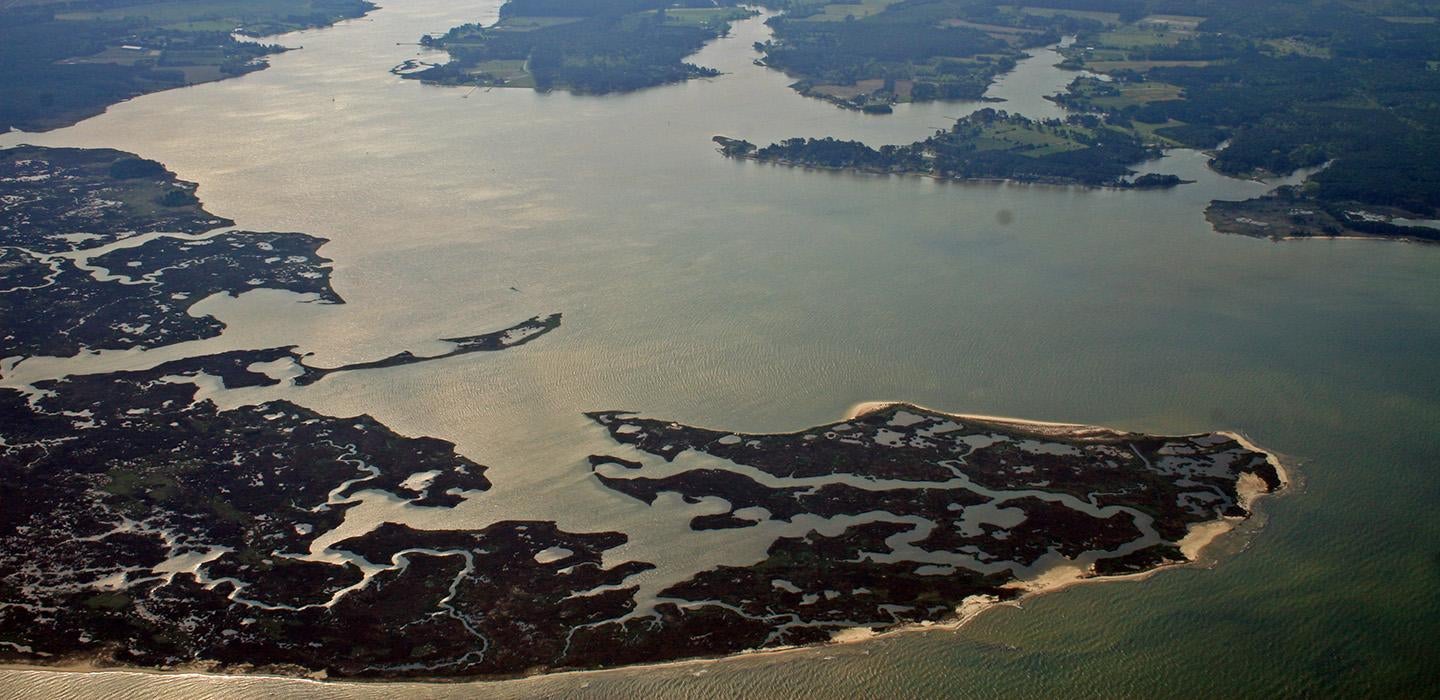
Subscribe to Pittwire Today
Get the most interesting and important stories from the University of Pittsburgh.Estuaries, where the tides combine ocean waters with freshwater from land, are critical natural environments to many marine species. According to the National Oceanic and Atmospheric Administration, estuaries provide habitats for roughly 68% of U.S. commercial fish catch and 80% of recreational catch. Ensuring these ‘nurseries’ thrive is essential to ecosystem health and many local economies.
Water temperature influences many aspects of estuary ecosystems. Because of ongoing climate change, temperatures of estuaries can become warmer, which could poorly impact the animals, plants and plankton that use these habitats. Most estuaries around the globe, however, lack surface water temperature data, which is needed to study the sensitivity of these systems to warming water temperatures, particularly in remote regions or places lacking historical data.
To that end, a team of scientists from the University of Pittsburgh and the University of Maryland Center for Environmental Science (UMCES) developed a spatially explicit database for 1,060 estuaries around the world using satellites.
Their findings were published April 5 in the journal Limnology and Oceanography Letters.
“The satellite products NASA and U.S. Geological Survey can provide, combined with faster computing, are enabling a new wave of science that is truly global,” said John Gardner, assistant professor in the Department of Geology and Environmental Science in the Kenneth P. Dietrich School of Arts and Sciences.
“We can measure changes in every estuary, and within every estuary, over the last few decades.”
“We calculated the warming rate of 737 estuaries and found 47% of them are, indeed, warming,” said Punwath Prum, a Pitt PhD student and lead author on the paper. “Our results showed that the warming rate of estuaries was faster at higher latitudes, and we could identify the estuaries most vulnerable to climate change.”
Lora Harris, an estuarine ecologist and professor at UMCES’ Chesapeake Biological Laboratory, along with Gardner — a UMCES alum — collaborated on this effort to characterize temperature change in estuaries.
“This data can be used to develop conceptual and statistical models that will help predict the relative sensitivity of different estuarine ecosystems to increasing water temperatures and inform strategies for protecting the estuaries that are most susceptible to climate change,” Harris said.
The team’s analysis indicated estuaries with extreme warming are located largely near the Arctic, which is the most rapidly warming region on Earth. Rising air temperature is a first-order control of warming estuaries, followed by factors such as freshwater inflow or estuary size.
Both ocean and estuary warming rates show that the East Coast of the U.S. and southeast Australia are more susceptible to warming with global climate change. Sea surface temperature increases are higher in the Northern Hemisphere than in the Southern Hemisphere, similar to estuary trends.
“We also found that global patterns in ocean warming coincided with patterns of estuary warming rates when we compared our results with spatial patterns in the European Space Agency Climate Change Initiative Sea Surface Temperature trends,” Gardner said. “So, the estuaries, in a sense, act as a barometer for the health of other waters.”
Indeed, estuaries are remarkably important to coastal carbon budgets. The increasing estuarine temperatures will likely impact estuarine carbon cycling and water quality.
“The consequences of warming are important to understand in the estuaries that are warming,” Gardner said. “They will help us identify at-risk ecosystems.”
There is something to learn from those estuaries that are not warming, as well. “What is it about them that makes them perhaps more resilient to warming? Finding this out may help us better manage or protect both at-risk and ‘sanctuary’ ecosystems,” Gardner said.
“But ultimately, climate change is global so both global and local actions are needed to slow the estuarine warming and mitigate its consequences.”
Photography by Jane Thomas/Integration and Application Network. Parkers Marsh Wildlife Refuge and Onancock Creek on the eastern shore of Virginia is home to a variety of flora and fauna sensitive to changes in water temperature.
This research was supported by NASA-NIP grant No. 80NSSC21K0921


